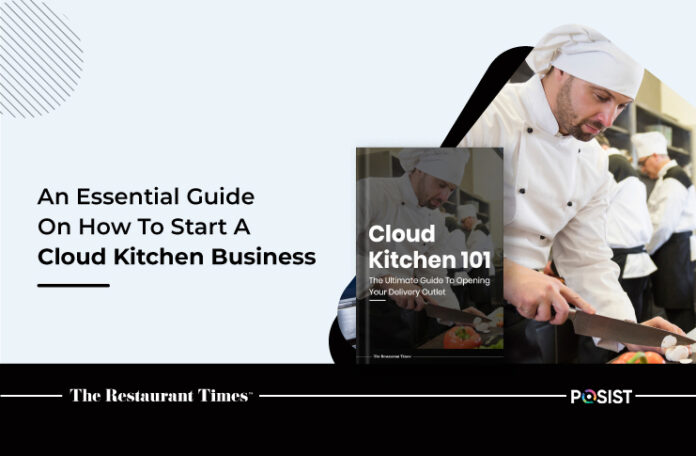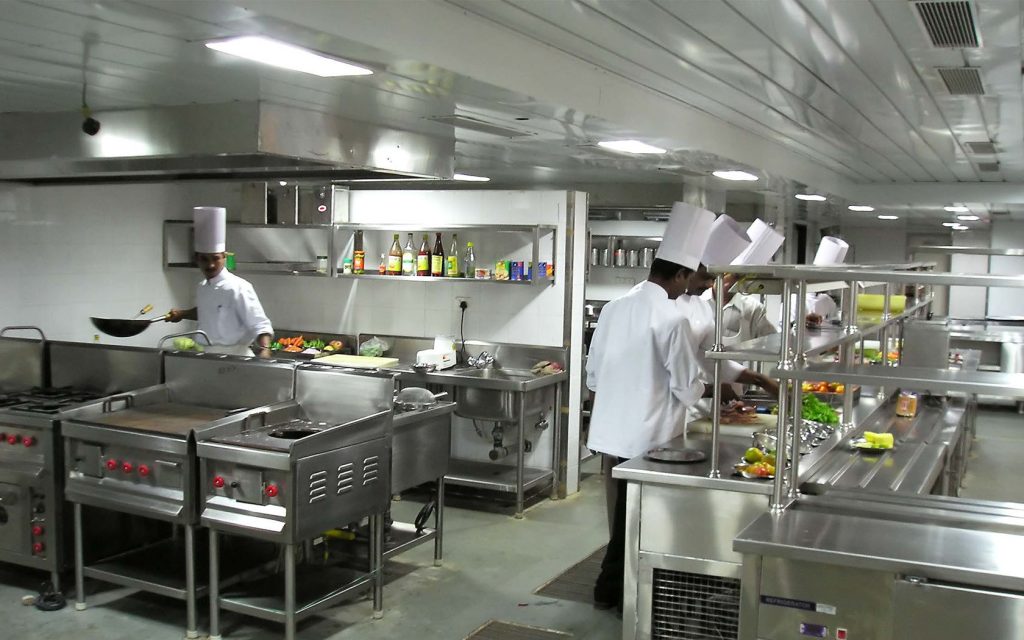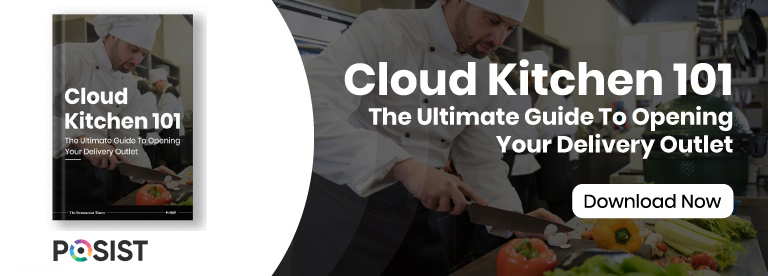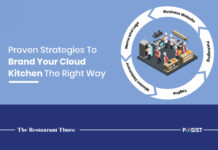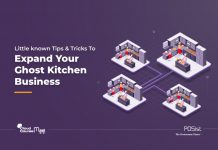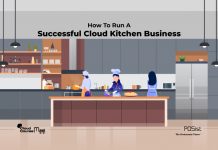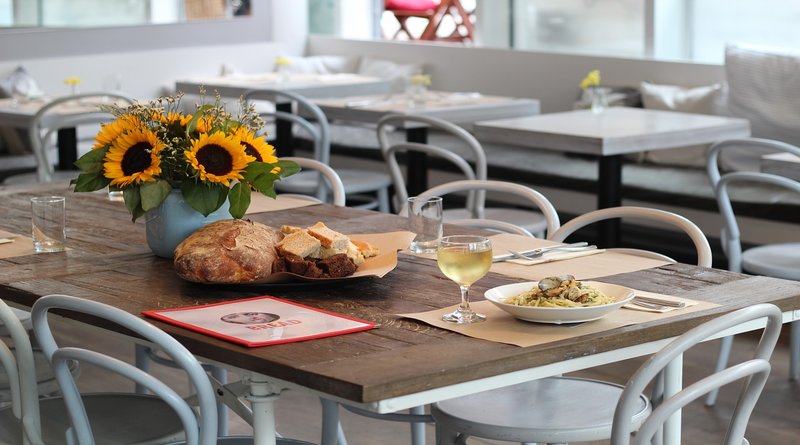A cloud kitchen, also known as a ghost kitchen, virtual restaurant, or dark kitchen, is a delivery-only restaurant format that doesn’t offer dine-in service. This restaurant business model accepts orders via online platforms such as websites, mobile apps, third-party platforms, or hotline numbers and delivers them to customer-specified locations. A delivery-only restaurant is considered a low-risk, low investment, yet high-profit model. Setting up a cloud kitchen business is significantly cheaper as compared to a traditional restaurant.
Advantages of the Cloud Kitchen Model
Here are a few reasons that have led to the growth of the cloud kitchen model:
Easier To Run Multiple Brands From a Single Kitchen
The cloud kitchen business model provides operators with the flexibility to launch multiple brands from the same kitchen. This can be achieved by using the same resources, for example, chef, raw material, and kitchen equipment or kitchen space for catering to multiple brands. Doing this reduces operating costs tremendously and provides one of the best ways for new restaurant operators to try out new offerings.
Low Overhead Cost
There are many overhead costs involved in the functioning of an on-premise restaurant, such as high rentals, electricity, and maintenance costs. Since the business model of a ghost kitchen demands just basic requirements, the overhead costs are much lower.
Captures a Wider Audience
Cloud kitchens can operate from multiple places and capture a broader customer base due to their hybridity.
Competitive pricing
Thanks to lower overheads and taxes, virtual kitchens are better positioned to price their menus reasonably.
Different models of Cloud Kitchen
The delivery-only business model presents a plethora of opportunities for cloud kitchens to business capitalize on. The cloud kitchen business model has undergone multiple variations already, with each tapping into the market in a unique way.
Types of Cloud Kitchen Business Models –
- Standalone/Single Brand Cloud Kitchens
- Multi-brand Cloud Kitchens
- Virtual Restaurants
- Co-working Kitchen Spaces
- Cloud Kitchen Operators
- Operator Managed Cloud Kitchens
Creating A Business Plan For Your Cloud Kitchen
Before opening a cloud kitchen, it is vital to have a proper business plan. The business plan must include the following aspects –
- Business Overview: Writing a business overview should ideally explain the concept of your cloud kitchen in brief. Include essential details such as your mission, the idea behind the business, the business’s initial and future plans, etc.
- Industry Analysis: There are several aspects that you must consider while doing the Industry analysis. Study the location, the target audience, monitor the competition, and conduct an in-depth SWOT analysis of your plan.
- Operations Plan: The operations plan must include precisely how you want your cloud kitchen business to function. Right from the order acceptance mechanism and staff required in the kitchen, to detailing the recipes, everything must be explained in detail.
- Financial Analysis: Analyze the capital that you will require to open a cloud kitchen. This will include the cost of rent, utilities, initial raw materials, equipment, and technology. Your financial analysis must also include metrics such as P&L, Cost of Sales, Cost of Labor, etc.
- Marketing Plan: With no physical storefront, focus more on online marketing efforts. Cloud kitchens need to spend heavily on marketing and branding, at least in the initial phase, to generate orders, and reach break-even. Therefore, it is advisable to spare some extra funds on it in the initial months of your business.
- Delivery Management: Look out for the best technology partners to ensure smooth delivery operations. Consider partnering with a third-party logistics provider or establish your own delivery fleet for delivering the orders.
Setting Up Your Cloud Kitchen
A cloud kitchen does not require a location with high footfall or premium property. It can be located even in a relatively inaccessible area but with increased customer demand, especially for a specific cuisine. Typically, a delivery-only restaurant can be very easily set up in a 250-300 sq ft space as there is no Front of the House. This brings down the cost significantly.
In an online kitchen arrangement, the number of staff needed is almost half that of a dine-in facility. Since online food aggregators already serve your target audience, listing on them is necessary.
Here’s a detailed guide on how you can partner with popular online food aggregators.
Simplifying Cloud Kitchen Operations With Technology
Apart from receiving telephonic orders, Cloud Kitchens accept orders from online sources such as websites, mobile app, and online food aggregators. This means that their ordering mechanism should be robust and capable of streamlining orders from a multitude of platforms. Manually managing orders from different sources may become extremely complicated and prone to errors. On the same note, real-time tracking and detailed reporting is essential for the smooth functioning of your dark kitchen. Therefore, having a smart cloud kitchen management system is critical. Select a robust cloud kitchen POS that is customized to suit your needs. In the post-pandemic era, a cloud kitchen POS is a necessity for delivery-only kitchens.
Ensuring Customer Satisfaction
While implementing social distancing in regular restaurants may instill trust in the customers, the same cannot be guaranteed for the delivery business. However, several steps can be taken to ensure the same level of quality and safety. Start with training your staff about personal hygiene. Conduct special training programs on practicing personal hygiene. Educate them about the risks of not following adequate safety standards while preparing or delivering the dishes. Also, use the best available packaging materials to keep your food items safe.
You can also partner with digital wallets and roll out exclusive offers via your own website/mobile app as well as online food aggregator platforms to entice customers to opt for a cashless delivery. Provide masks and gloves to your delivery personnel at all times during their shifts.
Expansion Strategies For Your Business
The low capital and operating expenses required to set up a cloud kitchen business make it extremely easy to scale in a short period of time. But, there are a few things you must consider before expanding your cloud kitchen business.
Maintaining consistency in service and food quality is exceptionally important while scaling a brand. This can be achieved by having a set of SOPs, standardized recipes, and trained staff.
While growing your business, it is advisable to have a Base Kitchen or a Central Warehouse management software that ensures that the same raw materials are supplied to all the outlets.
Read in detail how to start your own cloud kitchen business in this guide!


